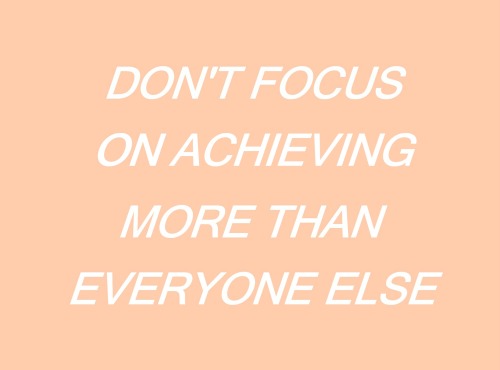What Are Some Resources To Learn Data Structures?
hi! i was wondering what are some of the most helpful resources you've found on data structures and algorithms? i took the class in college, but didn't do so well, so i'd like to relearn it on my own time. also, i love reading all your updates on coding, you offer an interesting perspective!
What are some resources to learn Data Structures?
DAY 584
Hi Anon,
I’m glad you enjoy the blog!
I’ve been meaning to put together a larger list (there are so so many to wade through), but the vast majority of what I’ve learned so far has come from the same two resources:
Lynda.com - Foundations of Programming/Data Structures
Edx - cs50/Week 5: Data Structures
I’ve also heard good things about this course, but haven’t started it yet:
Coursera - Princeton University/Algorithms: Part 1
Lynda.com membership costs money, but is free with a paid LinkedIn membership, and is often free with a local library membership (ask at your library).
The course is only 2.5 hours so it should also fit easily within the 10 day free trial. I had heard a lot of rave reviews about Simon Allardice as a teacher, and I looked him up specifically. He really is great and I enjoy his lectures a lot.
More Posts from Programmingravenclaw and Others


#beingacomputersciencemajor : Testing out html tags on Pokemon Go and finding out it actually works.
The first guy who heard a parrot talk was probably not ok for several days.
The only thing that’d be more potentially embarrassing than my internet history would be my calculator history, a chronicle of all the painfully simple math I couldn’t manage to do in my head.
hey reblog this if you think girls can study and excel in computer science

Recently, I read a research paper by Professor Manu Prakash from Stanford who has been working on a computer that works on fluid droplets and it is extremely fascinating.
Manipulating Matter
Inspiration: The computers that we have at our home are capable of manipulating Information, but they cannot manipulate Physical matter per se! Ergo, build a device that could process both information and physical matter simultaneously.

The setup is actually relatively simple to understand but the working is a bit tricky. They use a ferrofluid as the droplet and control the way it behaves with a circular magnetic field.
Through the coupling of magnetic and hydrodynamic interaction forces between droplets, AND,OR,XOR,NOT and NAND logic gates, fanouts, full adder, a flip flop and a finite state machine is implemented.
If this is the sort of thing that you are interested in, I strongly recommend you read their paper.

The bigger goal
“We already have digital computers to process information. Our goal is not to compete with electronic computers or to operate word processors on this,”
Prakash said. “Our goal is to build a completely new class of computers that can precisely control and manipulate physical matter. Imagine if when you run a set of computations that not only information is processed but physical matter is algorithmically manipulated as well. We have just made this possible at the mesoscale.”

Have a great day!
- part of ‘Fluid Friday’ series
Here is thing I learned when I was 29, which I now give away for free: If you want to do a thing, do it now, or as soon as feasible. Because there might not be a later. If it is a complicated or expensive or hard thing that takes many stages or has a steep learning curve, start working on the parts you can work on while you can work on them, then move on to the next thing. Accept that there will be a lot of failures along the way, and that you can come back from nearly any mistake that doesn’t involve making a left turn in front of an oncoming semi. Concentrate on yourself and what you can do, and don’t rely on other people to fix things for you, even though you might love them or they you. (This doesn’t mean you can’t love friends or family or partners. Friends and family and partners, in the long run, are the thing other than Useful Work and Adventures that make life worthwhile. Well, all that, and a really nice coffee and tea kit in the kitchen and the skill to use it. But that last thing isn’t terribly expensive unless you make it be.) But to succeed at a thing–a job, a relationship–in the long term, the thing is: You Must Commit, even though commitment is scary. And commitment is scary because once you’re in you’re in. It’s not bobbing around close to the shore, paddling with your feet. It’s both feet and swimming as hard as you can out where the rip currents and the sharks are, where the water turns blue. You can’t hold back because you’re afraid of getting hurt: you have to accept that you are going to get hurt, and put your hand in the fire of your own free will. It’s like climbing. You can make sure you’ve got good ropes and a belayer you trust (you SHOULD make sure you have good ropes and a belayer you trust!), but there’s moves you can’t make unless you’re willing to risk falling. I’m not saying follow your bliss off a cliff, in other words: part of being prepared and committed is having the right kit, whether it’s money in the bank for the lean times when starting off as a freelancer, or a partner who supports your work, or being young enough that starving in a cold room for a few years with pneumonia is romantic (I have the T-shirt!). That’s why it’s scary. It’s scary because you are taking an actual chance. But: things don’t work out the way you want them to if you just kind of drift along seeing what will happen. Nice things might happen! …but they didn’t, for me. Basically, what I figured out was that I had to be a protagonist if I wanted anything to happen, and part of being a protagonist was accepting that I might fail. And then have to deal with that failure. And that if I didn’t do it I would more or less inevitably fail, but I could pretend to myself that it wasn’t because I wasn’t good enough and that I didn’t know why. Seeking success, in other words, meant letting go of a layer of ego defense. This realization directly led to me having the career I always wanted, and doing pretty well at it. It also led to me having the best relationship of my life. I wish I’d learned it when I was sixteen, rather than twenty-nine, but I had some things I had to work through first.
So that thing you want to do? Assuming it’s not illegal or immediately fatal? Do it now.
What’s Up for March 2017?
What’s Up for March? The moon hides red star Aldebaran and crescents dazzle after dusk.

On March 4 the first quarter moon passes between Earth and the star Aldebaran, temporarily blocking our view of the star. This is called an occultation.

The occultation begins and concludes at different times, depending on where you are when you view it.

The event should be easy to see from most of the U.S., Mexico, most of Central America, the Western Caribbean and Bermuda.

Observers along a narrow path from Vancouver, British Columbia, to Hartford, Connecticut, will see the moon “graze” the star. The star will disappear and reappear repeatedly as hills and valleys on the moon alternately obscure and reveal it.

As seen from Earth, both Mercury and Venus have phases like our moon. That’s because they circle the sun inside Earth’s orbit.

Planets that orbit between Earth and the sun are known as inner or inferior planets.

Inferior planets can never be at “opposition,” which is when the planet and the sun are on opposite sides of Earth.

But inferior planets can be at “conjunction,” which is when a planet, the sun and Earth are all in a straight line.

Conjunction can happen once when the planet is on the opposite side of the sun from Earth and again when it’s on the same side of the sun as Earth.

When a planet is on the opposite side of the sun from Earth, we say it is at “superior conjunction.” As the planet moves out from behind the sun and gets closer to Earth, we see less and less of the lit side. We see phases, similar to our moon’s phases.

Mercury is at superior conjunction on March 6.

A few weeks later, the planet emerges from behind the sun and we can once again observe it. By the end of March we’ll see a last-quarter Mercury.

On April 20 Mercury reaches “inferior conjunction.”

Brilliant Venus is also racing toward its own inferior conjunction on March 25. Watch its crescent get thinner and thinner as the planet’s size appears larger and larger, because it is getting closer to Earth.

Finally, look for Jupiter to rise in the East. It will be visible all month long from late evening until dawn.

You can catch up on solar system missions and all of our missions at www.nasa.gov
Watch the full “What’s Up for March 2017″ video here:
Make sure to follow us on Tumblr for your regular dose of space: http://nasa.tumblr.com


concentrate on becoming your best self rather than trying to be somebody else
-
 cupcake-7 liked this · 6 years ago
cupcake-7 liked this · 6 years ago -
 developerslab reblogged this · 6 years ago
developerslab reblogged this · 6 years ago -
 thenotsoweirdbutstillweirdgirl liked this · 6 years ago
thenotsoweirdbutstillweirdgirl liked this · 6 years ago -
 midnight-overdrive liked this · 6 years ago
midnight-overdrive liked this · 6 years ago -
 computercleric reblogged this · 7 years ago
computercleric reblogged this · 7 years ago -
 bluehoodedhuntress liked this · 7 years ago
bluehoodedhuntress liked this · 7 years ago -
 bit-ta-blog liked this · 7 years ago
bit-ta-blog liked this · 7 years ago -
 alexissharae liked this · 7 years ago
alexissharae liked this · 7 years ago -
 longhairshortie reblogged this · 8 years ago
longhairshortie reblogged this · 8 years ago -
 donkeypoopisaboob liked this · 8 years ago
donkeypoopisaboob liked this · 8 years ago -
 depressionhog liked this · 8 years ago
depressionhog liked this · 8 years ago -
 panzerpaladin-blog liked this · 8 years ago
panzerpaladin-blog liked this · 8 years ago -
 art-on-ice-blog1 reblogged this · 8 years ago
art-on-ice-blog1 reblogged this · 8 years ago -
 art-on-ice-blog1 liked this · 8 years ago
art-on-ice-blog1 liked this · 8 years ago -
 pitifuldisaster liked this · 8 years ago
pitifuldisaster liked this · 8 years ago -
 effortwillneverbetrayyou liked this · 8 years ago
effortwillneverbetrayyou liked this · 8 years ago -
 iv8harshil-blog liked this · 8 years ago
iv8harshil-blog liked this · 8 years ago -
 brekkers-wraith-queen liked this · 8 years ago
brekkers-wraith-queen liked this · 8 years ago -
 trixr4kdz liked this · 8 years ago
trixr4kdz liked this · 8 years ago -
 allywut liked this · 8 years ago
allywut liked this · 8 years ago -
 codero2 liked this · 8 years ago
codero2 liked this · 8 years ago -
 volcanoesmeltmedown liked this · 8 years ago
volcanoesmeltmedown liked this · 8 years ago -
 tuhinity-blog liked this · 8 years ago
tuhinity-blog liked this · 8 years ago -
 bin7g liked this · 8 years ago
bin7g liked this · 8 years ago -
 scoop-scoopty-whoop liked this · 8 years ago
scoop-scoopty-whoop liked this · 8 years ago -
 himitsudayo23 liked this · 8 years ago
himitsudayo23 liked this · 8 years ago -
 coding-rush liked this · 8 years ago
coding-rush liked this · 8 years ago -
 ddesign-blog1 liked this · 8 years ago
ddesign-blog1 liked this · 8 years ago -
 colleydc10-blog liked this · 8 years ago
colleydc10-blog liked this · 8 years ago -
 nights-who-say-ni-blog liked this · 8 years ago
nights-who-say-ni-blog liked this · 8 years ago -
 darktimes93 liked this · 8 years ago
darktimes93 liked this · 8 years ago -
 darktimes93 reblogged this · 8 years ago
darktimes93 reblogged this · 8 years ago -
 ahsokazworld liked this · 8 years ago
ahsokazworld liked this · 8 years ago -
 ppower2007-blog liked this · 8 years ago
ppower2007-blog liked this · 8 years ago -
 h4n-yolo liked this · 8 years ago
h4n-yolo liked this · 8 years ago -
 alienquing-blog liked this · 8 years ago
alienquing-blog liked this · 8 years ago -
 hacksandheels reblogged this · 8 years ago
hacksandheels reblogged this · 8 years ago -
 ariaspinkhighlights-blog liked this · 8 years ago
ariaspinkhighlights-blog liked this · 8 years ago -
 p3rpl3xi0n liked this · 8 years ago
p3rpl3xi0n liked this · 8 years ago -
 cupcakehinch liked this · 8 years ago
cupcakehinch liked this · 8 years ago -
 smolhealthkit liked this · 8 years ago
smolhealthkit liked this · 8 years ago
Full-time Computer Science student, reader, and gamer with a comics addiction.
121 posts
